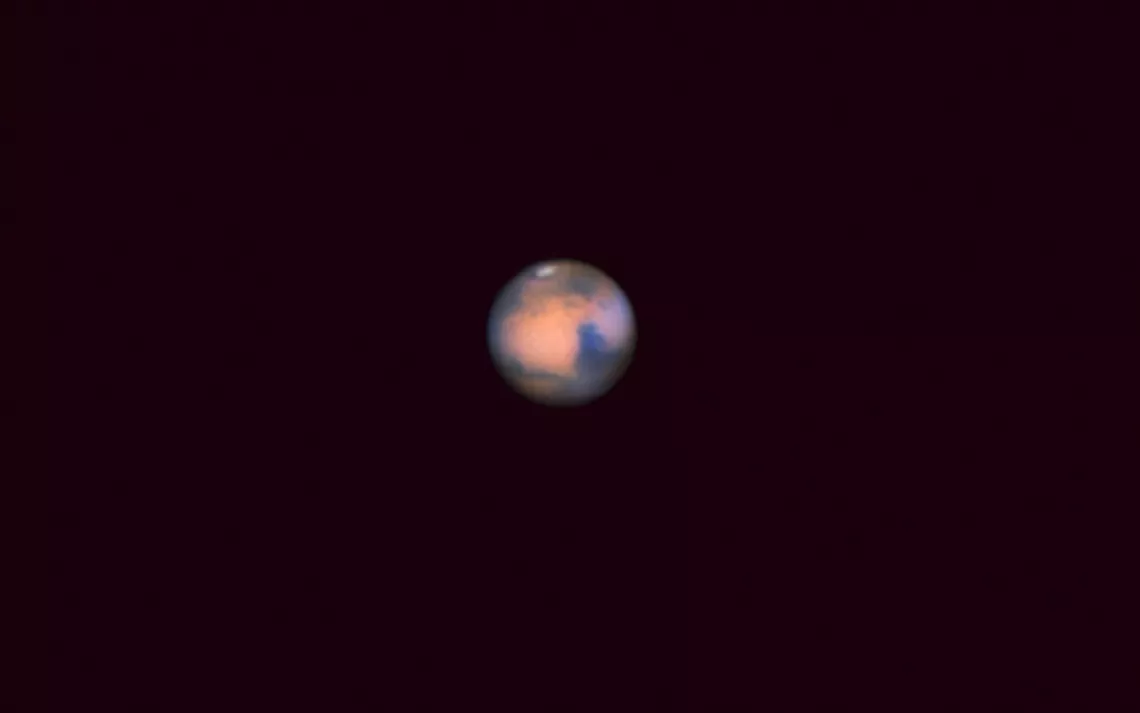Mars on the Move

This summer as you’re out enjoying the remains of the day fading into night, the planets Mars and Saturn will draw the eye of even the most casual observer. The two planets are bright in the southwest, with Mars in the constellation Virgo and Saturn in Libra.
Every night for the first four days of July, the moon will take one hop closer to reddish Mars. On July 5 the pair will be less than a degree apart. The star that lies about three degrees to the left of the moon and Mars is Spica. A few hours after sunset will show the moon already on its way to Spica and leaving Mars. By the next evening the moon will be to the left of Spica.
On July 7, the moon has traversed the sky until it is about one degree below yellowish Saturn. The magnitude 2.7 star to the moon and Saturn’s lower right is Zubenelgenubi, a double star that is easy to separate with a telescope. Look at all three objects through a telescope but save the moon for last, because it will ruin your night vision with its bright crater edges and rays.
Mars is moving in the same direction as the moon, just much more slowly. On July 12, 13, and 14, it will be less than a degree and a half from Spica. In August it reaches Saturn in the constellation Libra.
All the full moons this summer occur close to perigee, or when the moon is closest to Earth in its monthly orbit. This means the moon will appear a bit larger during full phase than other full moons or an apogee moon. This month, the full moon occurs on July 12 at 4:26 a.m. PDT. Less than 24 hours later the moon reaches perigee, on July 13 at 1:28 a.m. PDT. Look for talk of the “Supermoon” in August when perigee and full moon are just minutes apart.
 The Magazine of The Sierra Club
The Magazine of The Sierra Club



